

Matt Campbell
2025 Porsche 911 Carrera T review
6 Days Ago
Big and bold, with a spacious cabin to boot. The Volvo XC90 T6 R-Design is lovely, but it's let down by one avoidable flaw.
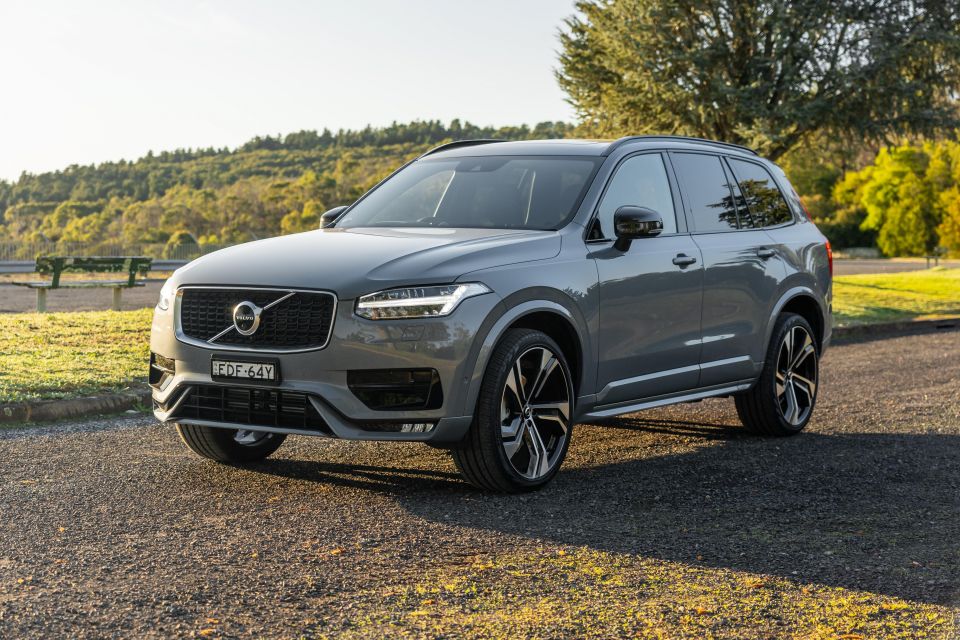
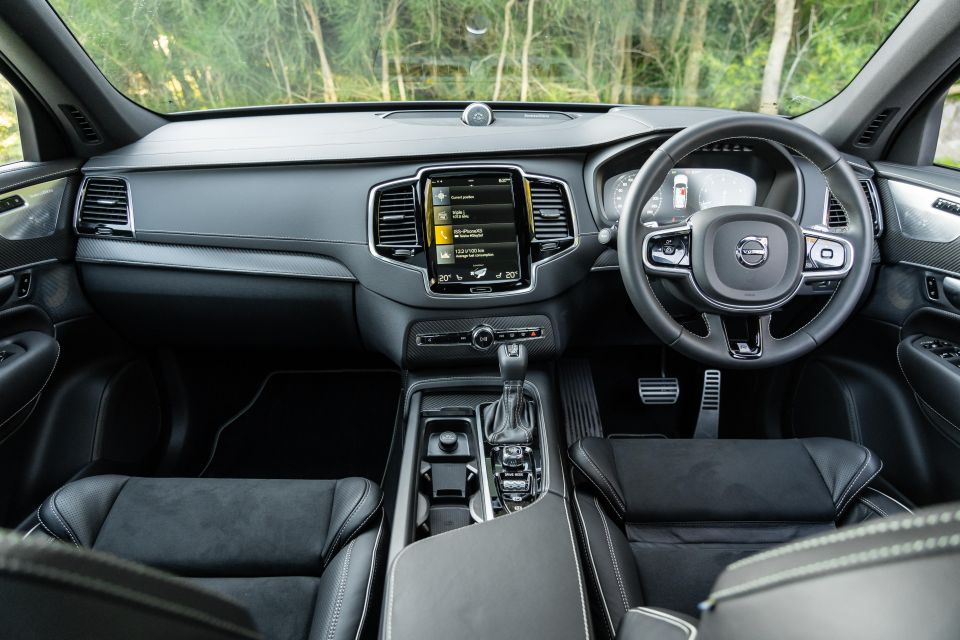

Contributor
New from
$89,990
excl. on-roads

Contributor
New from
$89,990
excl. on-roads


Contributor
New from
$89,990
excl. on-roads

Contributor
New from
$89,990
excl. on-roads
Quickly see how this car stacks up against its competition. Select any benchmark to see more details.
Where expert car reviews meet expert car buying – CarExpert gives you trusted advice, personalised service and real savings on your next new car.
The seven-seat XC90 has always been a big deal for Volvo.
The first-generation model served for 14 years, an eternity in the motoring world, and earned a legion of loyal fans with its practical, hard-wearing design. There was even a version powered by a Yamaha V8 engine.
When it launched in 2016, the latest XC90 ushered in a new era for Volvo. It was the first of the brand’s cars developed under Geely ownership, debuting with it a new platform, a new suite of safety systems, and a new range of engines.
Four years (and a very subtle facelift) on from launch, the Volvo XC90 is still seriously handsome.
Finished in Thunder Grey and riding on 22-inch wheels, our T6 R-Design tester certainly has looks befitting a high-tech Swedish battle bus.
Of course, what’s under the skin is what really matters here. Does the 2020 XC90 still have the practical chops to keep families happy?
Pricing for the XC90 range starts at $94,990 before on-road costs, but our T6 R-Design features a $96,990 sticker price before on-roads.
With options fitted, however, our test car actually cost $107,390 before on-road costs.
Even optioned-up, the T6 is less expensive than the range-topping T8 plug-in hybrid, which kicks off at $114,990 before on-road costs.


That price still undercuts the BMW X5 xDrive 40i with its petrol inline-six engine ($120,900 before on-roads) and Mercedes-Benz GLE 450 ($117,400 before on-roads).
If you’re on a tighter budget and aren’t locked into a European, the Kia Sorento GT-Line is worth a look. Ditto a Mazda CX-9 Azami LE.
The Volvo XC90 is generously equipped regardless of which model you choose.
The entire range features a portrait-oriented 12.3-inch touchscreen infotainment system, complete with Apple CarPlay and Android Auto, DAB digital radio, Bluetooth connectivity, satellite navigation, and connected online functionality.
Auto-dimming mirrors, four-zone climate control with a cooled glovebox, and a full gamut of luggage organising nets and dividers is also included.
As a sportier option, the R-Design gets carbon-fibre trim inlays, unique seat trim, a charcoal headlining, powered and heated front seats with lumbar and under-thigh adjustments, illuminated tread plates, unique pedals, and a leather gearshift.

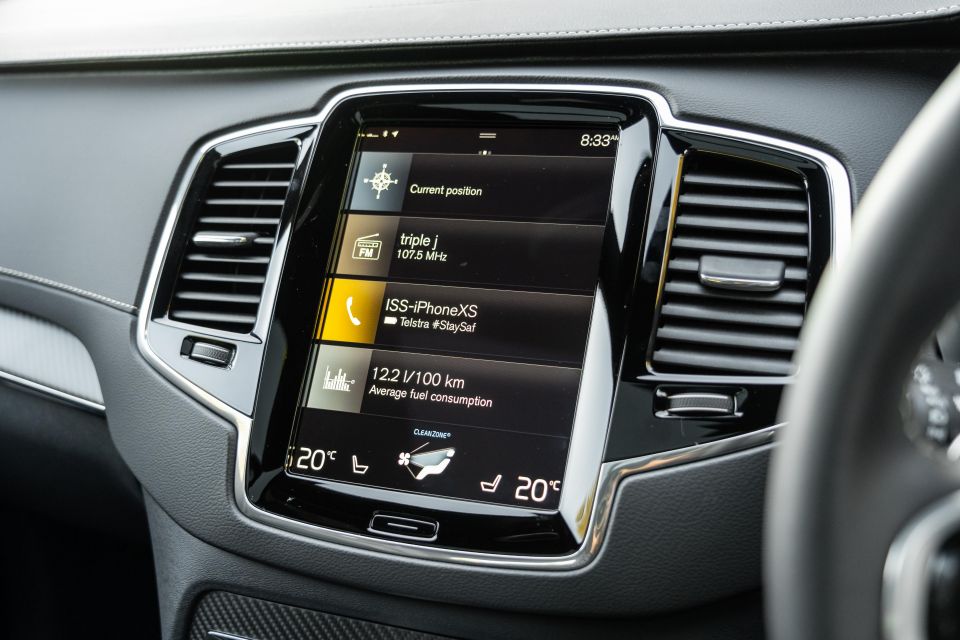

Externally, you’ll be able to tell the R-Design from its more mundane siblings by the unique front grille, coloured sills and bumpers, blacked-out mirrors, roof rails, and window trims, and twin exhaust. It looks seriously sharp.
Our tester also featured the $5500 premium pack (Bowers and Wilkins sound system, panoramic sunroof, tinted rear glass), the $3000 versatility pack (grocery bag holders, power-folding headrests, power outlet in transmission tunnel), and air suspension for $3000.
Metallic paint costs an extra $1900.
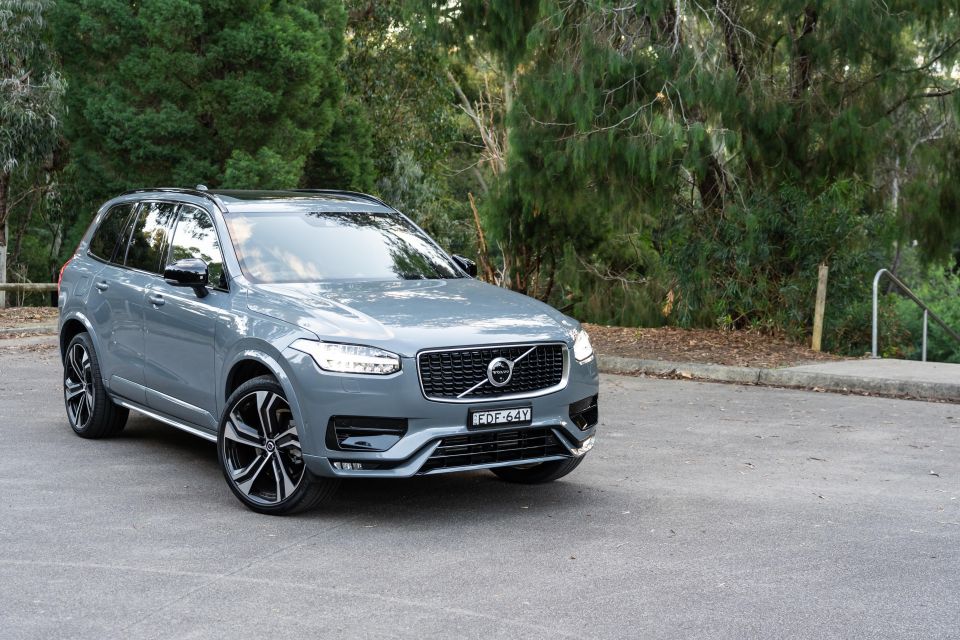
The Volvo XC90 has a five-star ANCAP safety rating, based on testing carried out by Euro NCAP in 2015.
It scored 97 per cent for adult occupant protection, 87 per cent for child occupant protection, 72 per cent for pedestrian protection, and 73 per cent for safety assist.
A full suite of safety assists are standard on the car in Australia, including autonomous emergency braking, lane-keeping assist, rear cross-traffic alert, blind-spot monitoring, adaptive cruise control, and a surround-view camera.

The Volvo XC90 is fitted with some of the nicest seats in production today. They look like modern art pieces, and manage to blend surprisingly solid bolsters with long-haul comfort to die for.
At just over two metres tall I fall firmly into the realm of oddly-proportioned, but the XC90’s pews offered more than enough adjustment to accomodate me. Particularly impressive in the extendable under-thigh support, which extends further than I’ve experienced on anything else.
All the materials in our tester were lovely, too. From the leather and suede seat trim to the carbon and chrome trim on the dashboard and doors, everything you touch feels high quality – and looks sharp to boot.
Although the screen and air vents have since been refined in the Volvo XC60, the design language kicked off by the XC90 still holds up in 2020.
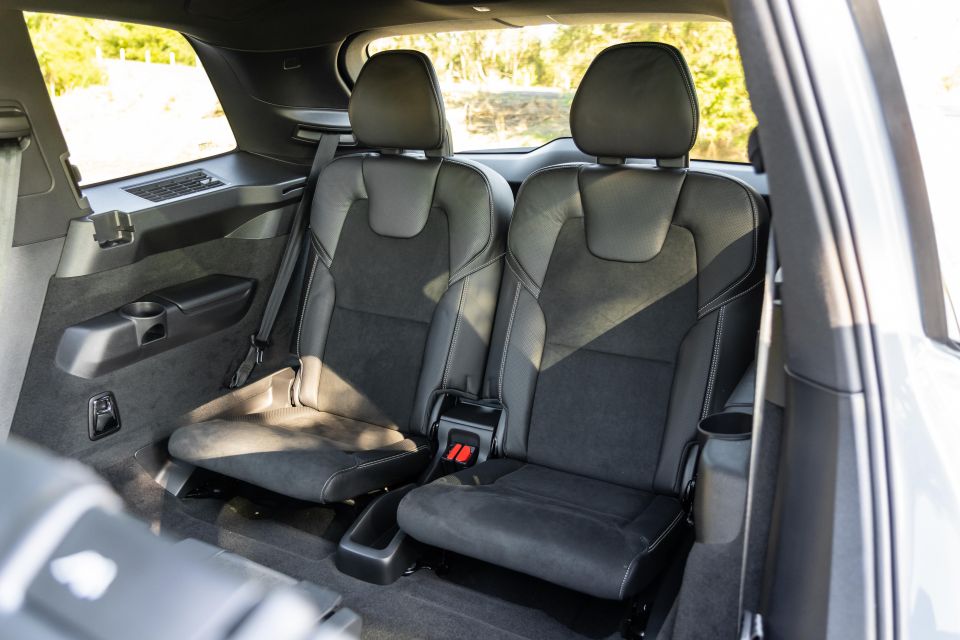
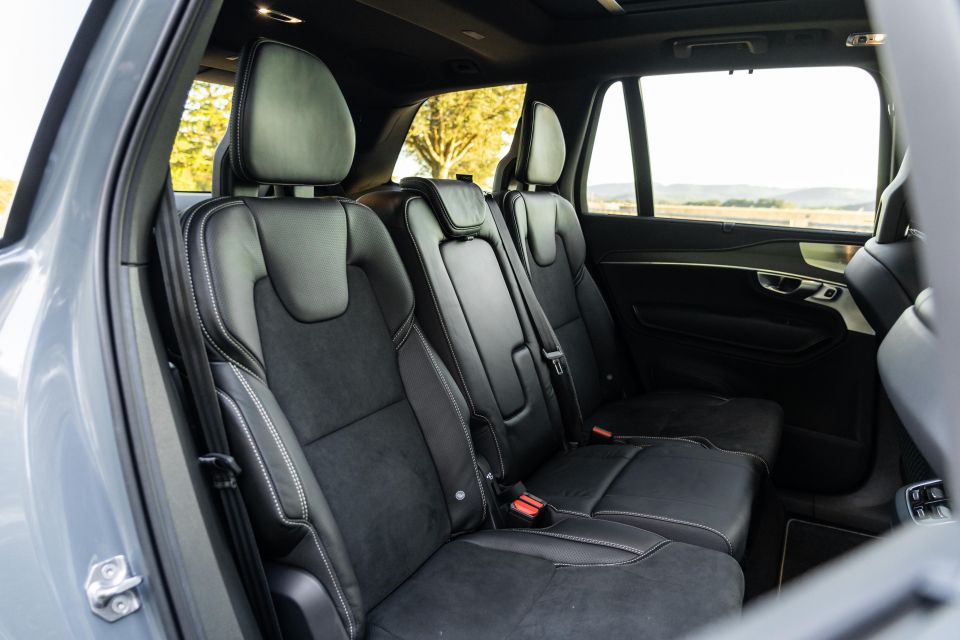
There’s plenty of storage options from the cupholders and oddment slot on the transmission tunnel to the deep bin under the armrest, spacious door pockets, and large glovebox. But there’s no wireless charging, which is something of an oversight given it’s standard on the BMW X5.
It’ll be replaced soon, but the Sensus infotainment system in the XC90 can still hold its own.
It’s built around tiles which expand and shrink based on what you’re using at a particular time, and manages to get away with lacking physical climate controls by anchoring a shortcut for your temperature, seat heaters, and climate control at the base of the display.
Apple CarPlay worked seamlessly, as did Bluetooth connectivity, and the range of swipes, pokes, and prods required to navigate are met with snappy responses and relatively smooth graphics.


Points go to the optional Bowers and Wilkins sound system for its clear, punchy performance.
The digital instruments are clear and easy to read, but lack the customisation options you get from the Volkswagen Group’s exceptional Virtual Cockpit. The head-up display is also a rare ergonomic misstep from Volvo.
Mike Costello and I are both tall, and both ended up turning the HUD off because it was set too low for our seating position – even with some fiddling around in the setup menu.
It’s not really a head-up display if you’re looking down at the windscreen washer jets, is it?
Down back, the XC90 does nothing to tarnish the reputation for practicality established by the original. With the rear bench in its rearmost position there’s acres of foot, knee, and headroom, and the car’s broad body means you’ll fit three across the back without too much clashing of elbows.
With that said, the central seat is a bit squeezy compared to the sculpted outer pews. It also houses Volvo’s pop-up booster seat, while the outboard seats feature ISOFIX anchor points.
Quad-zone climate control means the second row can pick its own temperature, too.
The third row isn’t quite as accomodating. Folding the seats up requires a bit more lever-pulling than some of its rivals, and if you don’t have long arms the layout necessitates more stretching than is ideal. Check out our video for a look at exactly what that means.
Legroom back there is acceptable, if not exceptional. They’re more than capable of housing kids and teenagers for shorter journeys, but adults won’t want to be crammed back there for too long. There are air vents for the third row, which is a touch that will win favour on a hot Australian summer’s day.
Boot space is 356L with the third row in place, and a pop-up divider is on hand to offer a place to hook shopping bags if required. The boot door is powered and opens nice and high, meaning taller drivers won’t bash their heads.
Folding the back row into the floor frees up 1007L, while there’s a positively capacious 1868L with the second row folded flat.
Don’t be fooled by the badge. The XC90 T6 doesn’t feature a six-cylinder engine, and isn’t just turbocharged.
Instead, the petrol T6 in the Volvo XC90 is a 2.0-litre four-cylinder unit that’s both supercharged and turbocharged.


It delivers 246kW of power and 440Nm of torque, put to all four wheels through an eight-speed automatic transmission.
Volvo claims fuel use of 8.5L/100km, but we saw north of 10L/100km in the city.
The XC90 is mostly very nice, with one easily-avoided fault. The R-Design rides on 22-inch wheels, and they’re too big.
Even with the optional air suspension fitted, the Volvo XC90 doesn’t ride with the wafty indifference its comfortable interior and imperious design deserves. Even in the suspension’s most compliant mode they patter over smaller bumps, and big hits crash into the cabin with more force than is ideal.
It’s more noticeable in Polestar Engineered mode, which drops the car down to help tighten up the handling, but the sense that there’s too much wheel and not enough sidewall never really goes away.

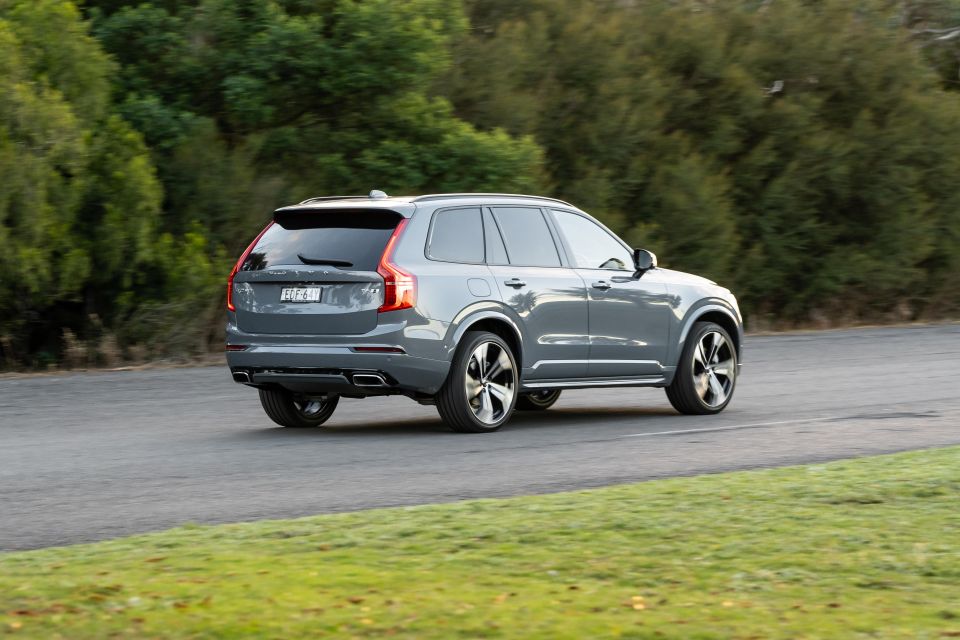
That’s a shame, because the XC90 otherwise has plenty going for it. Despite its small displacement, the engine is willing and able to haul the car’s 2043kg frame around at a decent rate of knots.
Throttle response is impressive, thanks no doubt in part to the fact there’s a belt-driven supercharger on hand to provide boost at lower engine speeds, before the exhaust-driven turbocharger gets into its stride and takes over as the revs rise.
It leaps off the line with intent, and pulls strongly through the lower gears when asked. There’s even a hint of supercharger whine from the cabin.
But the eight-speed automatic transmission generally shuffles through the ratios quickly and quietly in search of the tallest gear possible for better fuel economy in normal driving.
Lean on the accelerator and it’s happy enough to kick down, and shifts are relatively smooth – although not quite as seamless as the ZF eight-speeder in the BMW X5.
Despite its tough-looking exterior, the XC90 is easy to drive around the city.
The steering is light, and sight lines (aided by the surround-view camera) are good, which makes parking a breeze. It’s worth keeping well clear of kerbs though, lest you scrape those big wheels.
It’s rock solid at speed. Save for the ride on our R-Design tester, the comfortable seats, quiet cabin, and excellent active cruise control system, complete with steering assist as part of its Highway Pilot suite, make the big Volvo a perfect candidate for families who spend lots of time on the road.
Volvo backs its range with a five-year, unlimited-kilometre warranty. That puts it alongside Mercedes-Benz as a leader in the luxury space, compared to BMW and Audi with their three-year warranty terms.
Maintenance in the Volvo XC90 takes place every 12 months or 15,000km – whichever comes first. A three-year service plan in the petrol will set you back $1795, compared to $1895 for the diesel.
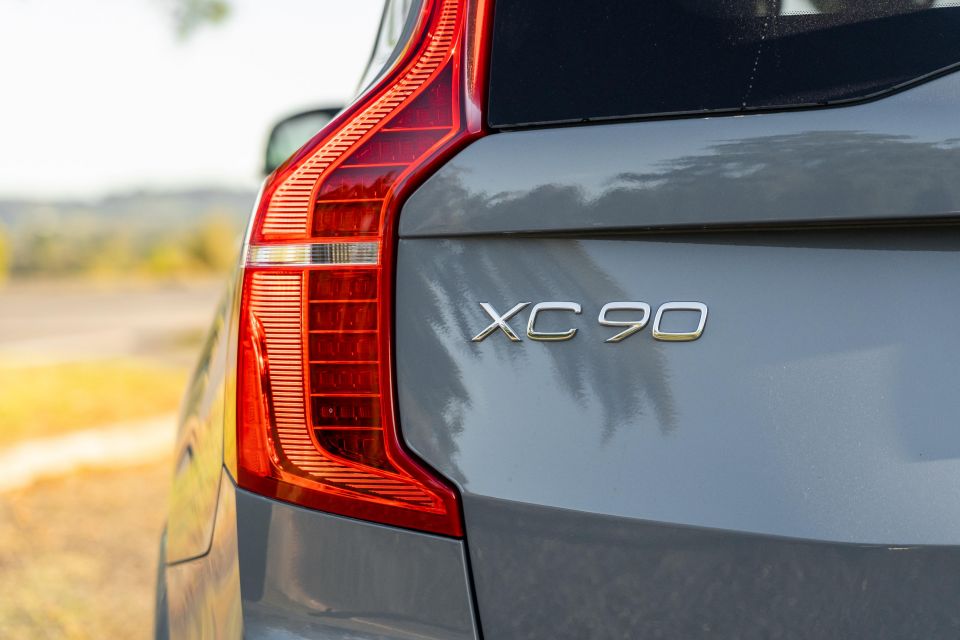
The XC90 has a going for it, but the wheels on the R-Design are too big.
The base Momentum can be optioned with 19-inch wheels and comes with 20s standard, while the luxury-focused Inscription has 21-inch rolling stock.
Although opting for R-Design trim brings some lovely, sporty touches, we’d be steering clear because of those standard 22-inch wheels.
Ride aside, the Volvo XC90 is ageing gracefully. The cabin is still practical in the extreme, and its technology still feels up to date. It’s also a refined highway cruiser, and there’s no questioning its safety credentials.
I’d certainly be tempted if I had $100,000 to spend on a family SUV.
Take one for a test drive if you’re looking at the BMW X5 or Mercedes-Benz GLE, but spec carefully.
Where expert car reviews meet expert car buying – CarExpert gives you trusted advice, personalised service and real savings on your next new car.
Scott Collie is an automotive journalist based in Melbourne, Australia. Scott studied journalism at RMIT University and, after a lifelong obsession with everything automotive, started covering the car industry shortly afterwards. He has a passion for travel, and is an avid Melbourne Demons supporter.


Matt Campbell
6 Days Ago


James Wong
5 Days Ago


Max Davies
3 Days Ago


Josh Nevett
2 Days Ago


Josh Nevett
2 Days Ago


Paul Maric
14 Hours Ago